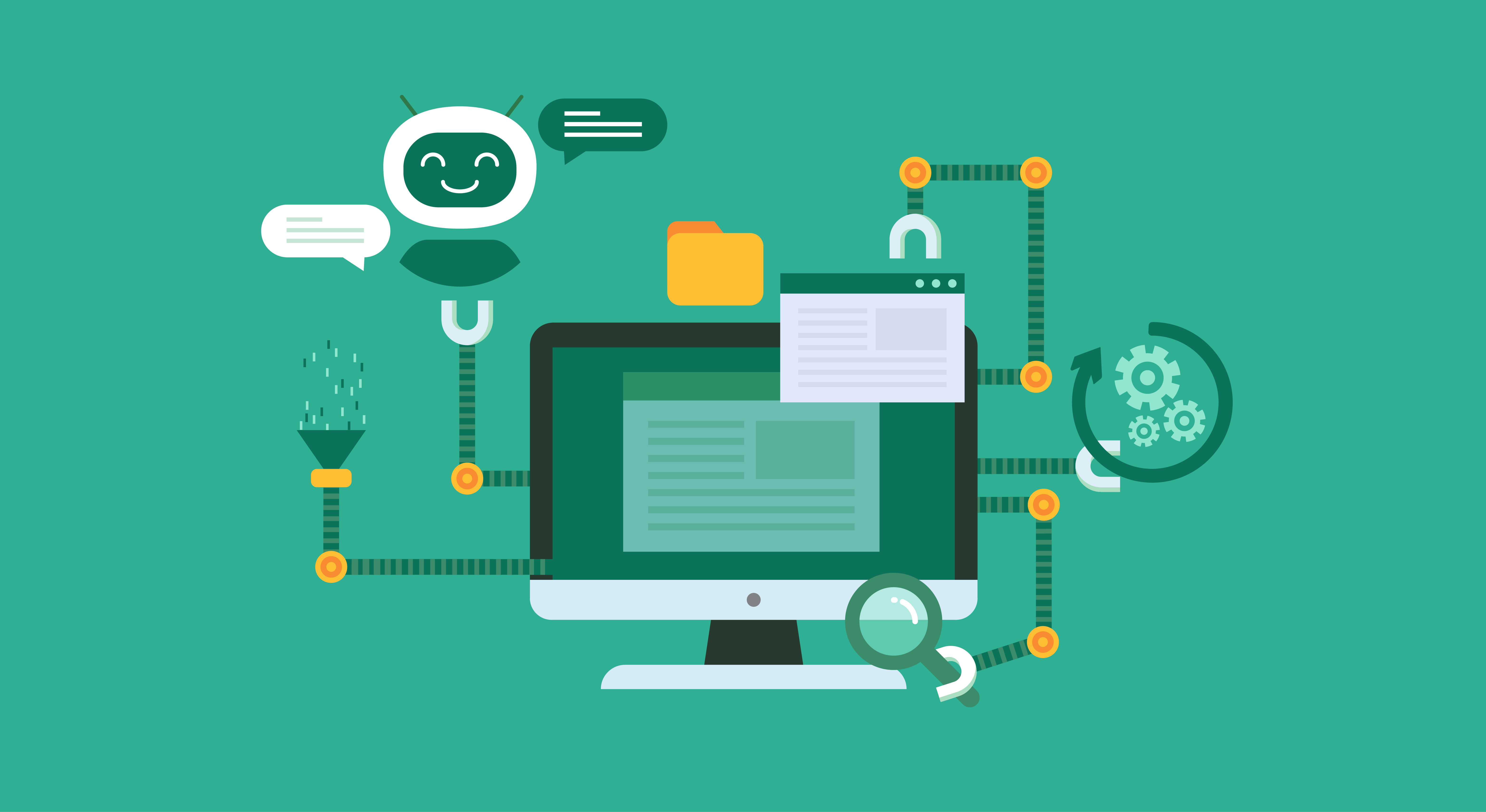Every minute an agent spends on a trivial request like password reset is another valuable minute that could be spent on a more complex issue. You either need to enable customers to find solutions on their own or prevent these requests from getting created altogether. In any case, Automated Customer Service is the solution you are looking for.
Let’s break down why you need to automate your customer service and how to do so.
What is Automated Customer Service?
Automated customer service is a form of support in which redundant activities are automated to reduce manual efforts and costs. Automation helps agents focus on creating value and building relationships rather than just problem-solving.
What are the benefits of Automated Customer Service?
Speed and quality are integral components of customer satisfaction. Automation helps agents achieve both when tailored perfectly to business-specific scenarios and use cases. The benefits of customer service automation are manifold:
Reduce costs and overheads with process standardization: Automation rules standardize processes across functions, eliminating the need for constant supervision. It is a one-time expense that saves everyday costs and overheads incurred in resolving tickets and training agents.
Improve cross-functional collaboration: Internal communications are inevitable in customer support. Automation allows you to auto-initiate conversations by adding private notes and replies, thus improving cross-functional collaboration.
Improve agent productivity by automating processes: Automation reduces agent workload by automating repetitive processes. With monotonous tasks out of their way, customer service agents gain more productivity and efficiency.
Empower and encourage customers with self-service tools: Self-service tools enable customers to handle rudimentary issues themselves wherever they are and whenever they want to, leading to a friction-free customer experience.
How to automate customer service?
- Create a Knowledge Base to Facilitate Self-service
- Leverage AI-powered automation with Chatbots
- Automate support processes with Help Desk Automation
1. Create a Knowledge Base to Facilitate Self-service

While waiting for answers is inherently tough for customers, it is magnified when the issues are particularly minor. Positive customer relationships are built out of support and not dependency. Self-service tools encourage customers to explore the product for solutions instead of having to depend on agents, thereby offering a sense of control. With self-service tools becoming responsive, intuitive, and incredibly easy to set up, customers need not get on a call to check payment status or revoke user access.
In a recent survey, 75% of customers rated faster response time as the most important support metric. Faster response time is not necessarily achieved by rushing the interaction towards closure, but by providing alternative solutions to traditional, drawn-out resolution processes. Recently, 81% of millennials admitted to resorting to google for solutions before calling a support agent. Online solutions are not tailored to a business, which leads to customers eventually reaching out to call center agents for support.
The ultimate solution is self-service. Self-service involves creating a Knowledge Base of your own and making it discoverable to customers with minimal actions on your website. A knowledge base is a library of information about your products and services. It typically contains FAQ pages, community forums, tutorial videos, user guides, and a support center.
Rightly used, a knowledge base could prevent a support ticket from being created in the first place. Lesser tickets mean more individual attention, which invariably leads to faster response times and increased customer satisfaction. With CRM or API integrations, you can distribute support volume with a ticket-routing algorithm. 91% of customers would prefer a knowledge base to phone calls if it is customized to their needs. Today’s tech-savvy customers know the advancements in CX to the point where they know their expectation is in fact, realistic. Now is the best time to create a dedicated knowledge base for your customer service team, for finding a faster competitor has never been easier for customers.
What to Know When Creating a Knowledge Base?
A knowledge base is only as good as its relatability to your customers and your products. There is no scarcity of solutions. They are everywhere. Your customers should have precise solutions handed over to them in a language that is understandable and does not create further need for help. The second thing to make sure is the searchability of your knowledge base. With the right keywords, copies, and tags, make your knowledge base searchable when your customers need it.
2. Leverage AI-powered automation with Chatbots

The impact of artificial intelligence on customer service needs no introduction. One such impact is the application of Chatbot software. A chatbot is an AI software that simulates interactions with customers, providing preliminary support that does not require human support. They interpret and answer customer questions based on the available knowledge base articles and resources.
Through adaptive machine learning, Chatbots become more knowledgeable, contextual, and personal with every new customer interaction. Contrary to popular belief, AI-powered solutions like chatbots are not meant to replace human agents. Chatbots assist agents by handling common questions and customer issues, thus taking a significant workload off of them.
Chatbots don’t just bring more hands on the deck. Chatbots are available 24/7, which means they make round-the-clock availability possible without scaling the support team. No matter the size of the team or the volume of support requests, chatbots don’t experience cognitive load. While they do the grunt work, agents can focus on adding value to every customer interaction.
What to Know When Setting up Chatbots?
Chatbots are not an excuse to let personalization go for a toss. Until chatbots gain enough conversational history to learn from, they will utilize the resources fed to them by you. If impersonal and vague, chatbots can prove to be irritating for customers. They will end up reaching out to you, which defeats the purpose of chatbots.
3. Automate support processes with Help Desk Automation

Knowledge base or chatbots enable customers to save time through less dependence on service agents. Help Desk Automation, on the other hand, helps agents save time on internal support processes. Repetitive tasks hinder agent productivity by keeping them glued to their to-do lists. Help Desk Automation is the process of automating these repetitive tasks and processes to simplify the support efforts. It saves time, reduces human errors, enhances productivity, tracks process adherence without manual supervision, and ensures collaboration across support channels.
With no-code and customizable automation workflows, you can automate any complex process. Ticket organization, for instance, is an everyday functionality in customer support. With Smart Rules, Auto-assignment, and Auto-responders, you can reduce ticket handling to a matter of a few clicks. From ticket creation to assignment to closure, you can automate everything and rely on real-time notifications to stay informed about the process.
What to Know When Automating up Help Desk Processes?
Help Desk Automation is not a set-and-forget strategy. Automation extrapolates the predefined scenarios and triggers to everyday processes. That includes mistakes. While benefits will be compounded by automated systems, so will the mistakes. HappyFox Workflows provide insightful automation reports which you can use for error check and process compliance.
Key Takeaways on Automated Customer Service
Automated customer service is the gateway to simplified support. Automation lets you eliminate the redundancy and monotony of customer support so agents can direct their efforts solely on superior customer experience. Today’s widely used automation tools are:
Knowledge Base – Knowledge base encourages customers to leverage the self-service resources available on the website to find solutions to common problems.
Chatbot – Chatbots mimic human support to provide solutions to frequently asked questions. They provide round-the-clock assistance, enabling customers to find the help they need when they need it.
Help Desk Automation – Help desk automation enhances agent productivity by automating internal support processes that do not require manual touch.
HappyFox Workflow software is a powerful yet easy-to-manage tool you can use for customer service automation. Sign up for a HappyFox demo to learn how to leverage automation for superior customer service.








